India is known to be different, but Varanasi was a special place, even for Indian standards. Coming off a night train from New Delhi, we arrived at the Varanasi Junction station early in the morning and took an auto rickshaw to the old town area by the river Ganges. Even though we’ve taken our fair share of crazy rides, this one was a thrill, a crash-defying journey as we swerved around other cars, rickshaw, people, and cows.

The proper introduction to Varanasi came, however, when our auto rickshaw stopped at the entrance to the old town. Its many alleyways were too small and narrow for traffic and we had to continue the rest of the journey on foot. It was here that we began seeing the real Varanasi, and it was here that chaos was completely redefined for us.
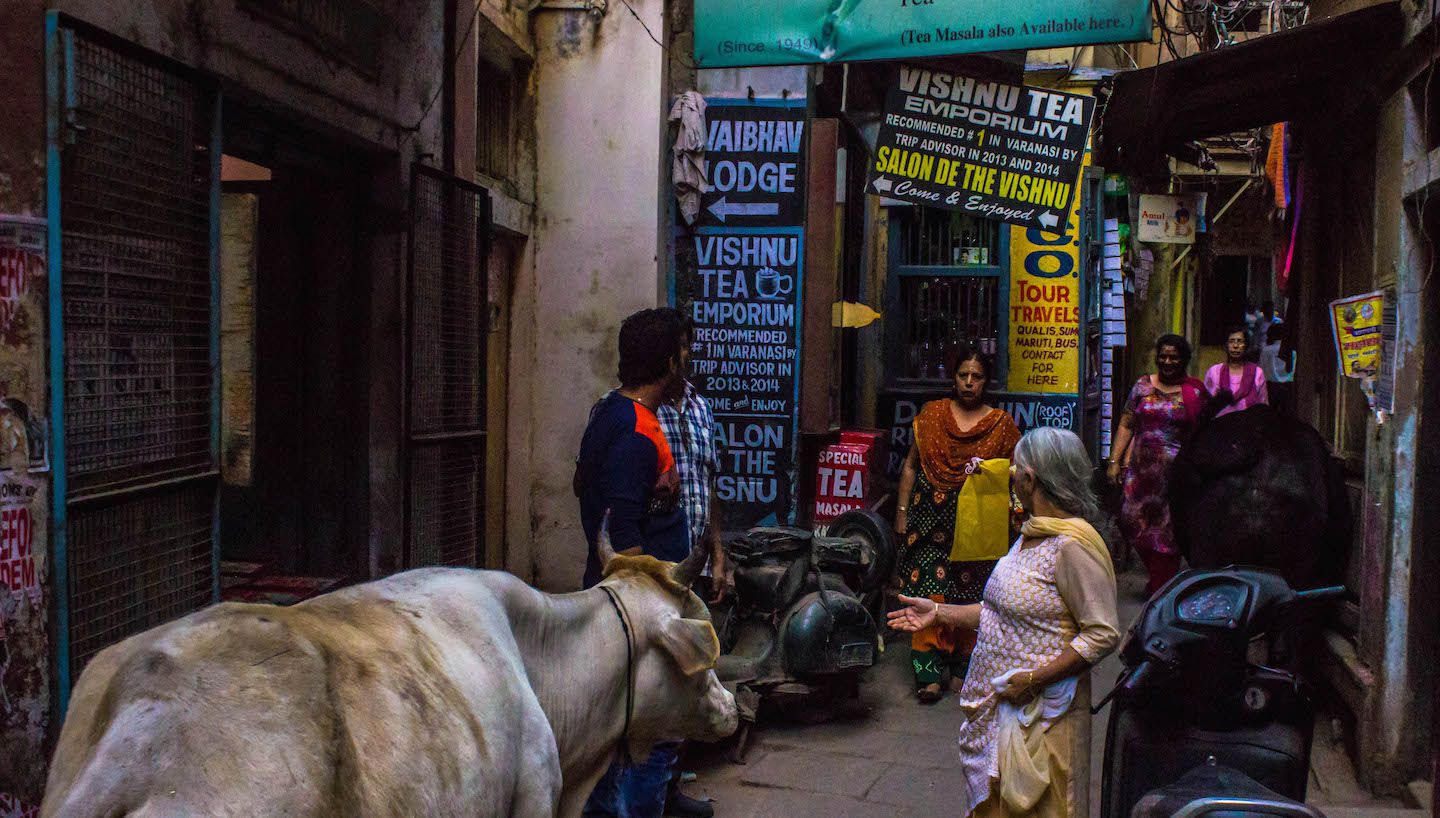
The alleys were a disorienting maze. We shared them with hundreds of other pushy people, honking motorbikes, huge cows and barking dogs. The many three-story buildings flanking both sides of the narrow alleys prevented any breeze from blowing away the smell of cow dung and flooding sewage. It also created a greenhouse effect that intensified everything and overwhelmed our senses.

If that wasn’t enough, we were near the holiest temple in all of India, the Vishwanath Temple. We didn’t know this at the time, but this temple received from 3,000 to 1,000,000 visitors per day. The lines of people standing in the narrow alleyways leading up to the temple for hours and hours were endless. Just our luck, the day we arrived had a larger than usual crowd and multiple entrance ways were blocked by police due to crowds. This meant that we had to take a major detour and we were never so glad to reach our guesthouse.
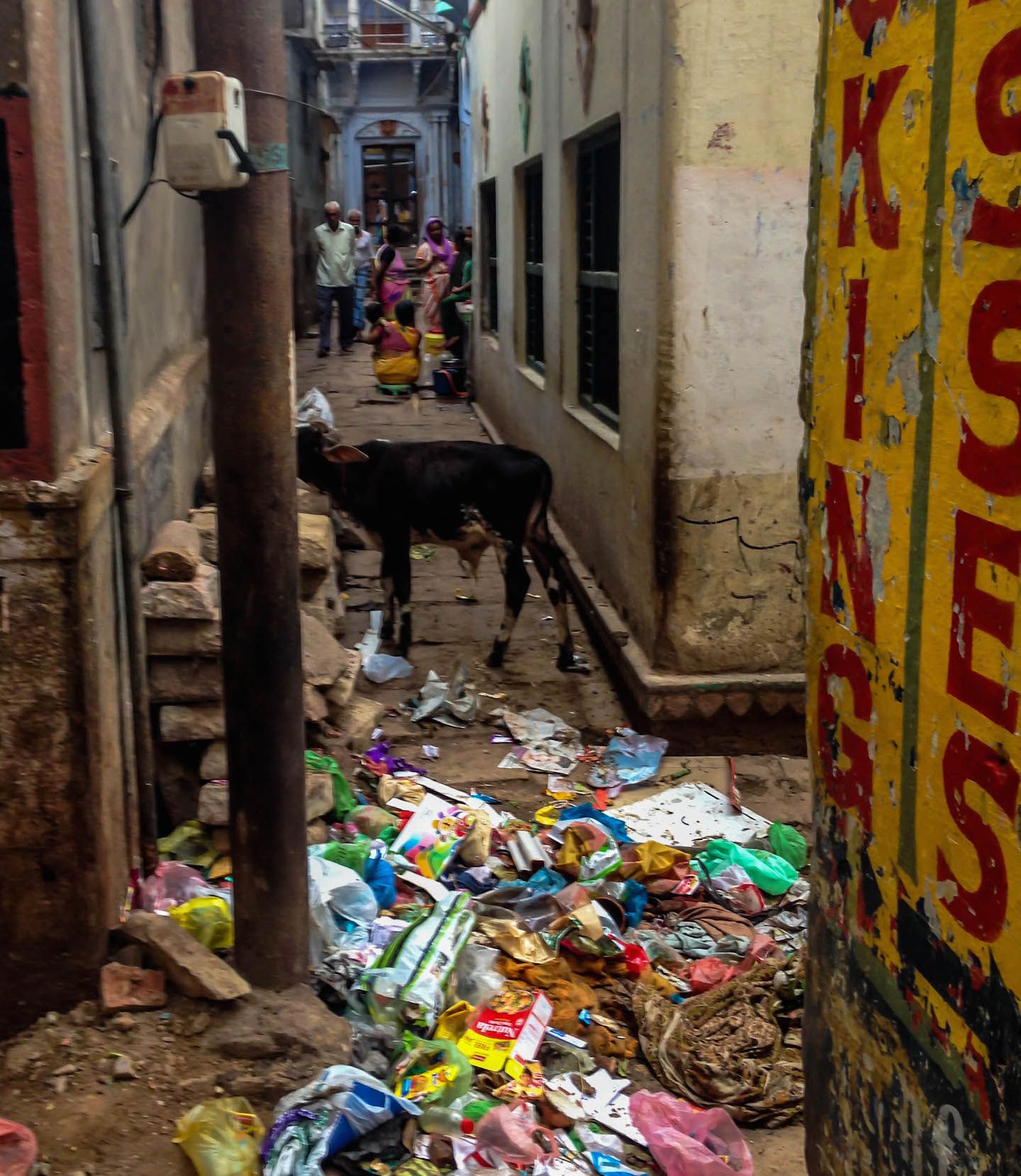
Bathed by the holy Ganges river, Varanasi is where Hindu pilgrims come from all over India to wash a lifetime of sins or to let their loved ones peacefully leave this world. All of these rituals of life and death happen in the many ghats, or public stairways leading down to the Ganges. Ghats seemed to line the entirety of the banks of the Ganges, with some ghats right beside one another. We ventured through the main Dashashwamedh Ghat, a bathing and worship ghat, to get a sense of what it’s all about before we went all in. It was certainly different than anything else we’ve seen.

Each ghat had many steps leading down into the holy Ganges. Colourful, full of life and filled with people of all walks of life, the atmosphere was intense. We saw monks praying, locals revealingly bathing themselves and a large group of people who had just let their loved ones go (signaled by their shaved heads). Just standing there and watching people following their rituals was a memorable sight in and of itself.
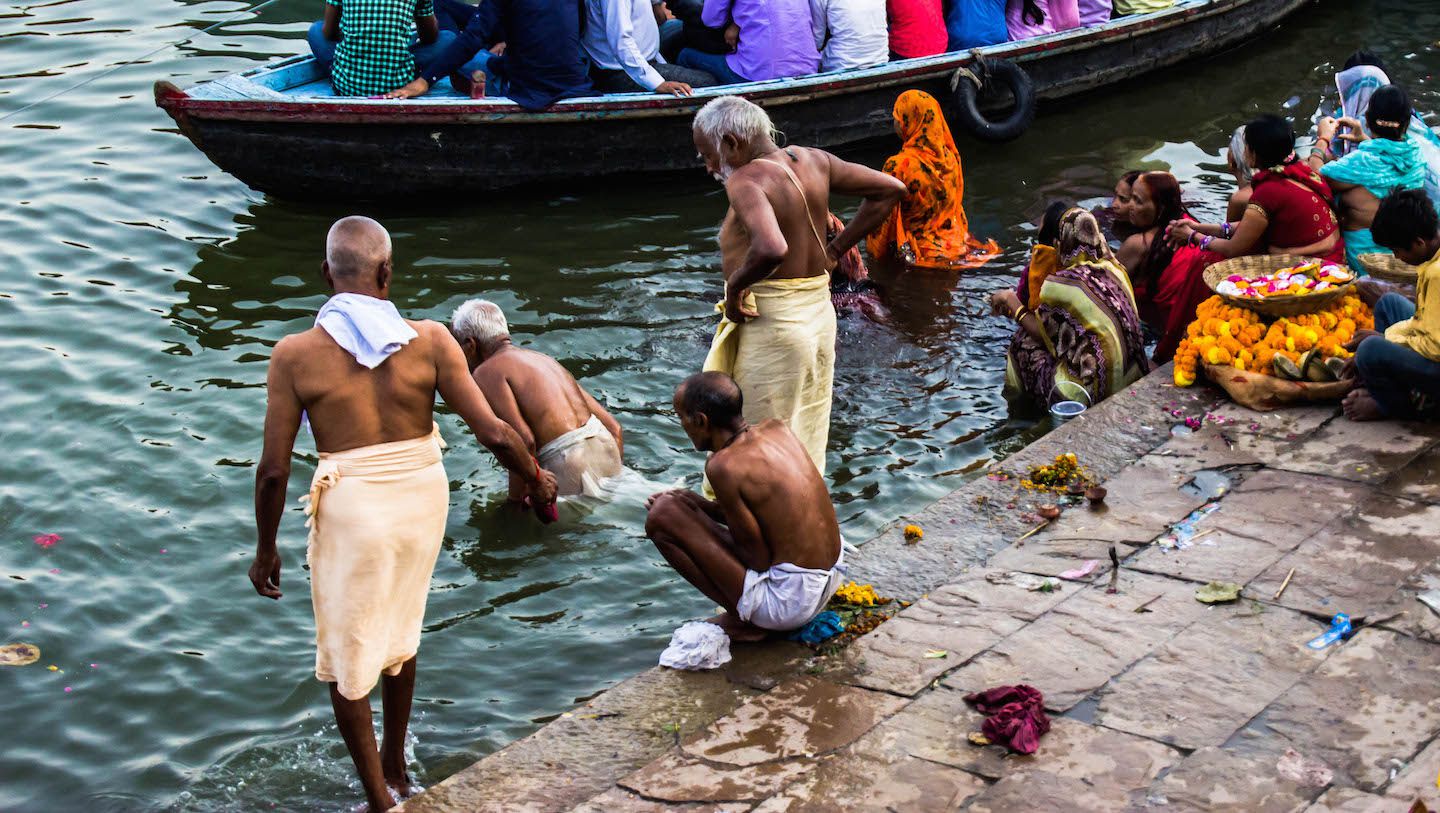
After seeing the main ghat, we realized that the best way to experience the rituals of life and death on the Ganges would be from the river itself. On a boat, rowing slowly from one ghat to another, we could observe everything and everyone. So we did! We rented our own boat plus driver and for over an hour, we cruised the entire spread of ghats.

On the boat, we saw over 80 ghats of all kinds. Even though they were all essentially the same thing, each one differed in appearance, number of people visiting and rituals performed. While we found the water in the Ganges to be extremely filthy, we saw many people all along the river taking off their clothes to go into the water, dipping their heads in, even sitting in the water for hours. There were kids learning how to swim at a few of the ghats. It made us cringe to think about how much ashes, feces, and other things were in the water. We couldn’t help but feel like we were in a whole other world.

Even from afar, we could see the smoke coming out of one particular ghat – the Manikarnika Ghat. Varanasi is one of the most auspicious places to be cremated for Hindus and it all happens in public. As our boat approached the 24-hour burning cauldron, where nearly 200 bodies were cremated a day, we started to get glimpses of the whole ritual. Four men carried the bodies of their deceased loved ones down to the Ganges. The body laid on a bamboo stretcher was always covered with an orange fabric decorated with real flowers (that the cows were eating when the stretcher was put down).

Singing and praying, the men dipped the body in the holy waters of the Ganges and prepared it for the cremation. The men carrying the body, usually relatives or close friends, put the body on the pyre while praying and chanting. The chief mourner, usually the eldest son, brother or husband received a torch to set the pyre alight. In an emotional moment, the first fire was lit at the mouth. After the burning completes in 3 hours or so, the chief mourner will use the water from the river to extinguish the fire. The ashes and bones fragments are then collected, put in an urn, and emptied into the river.

Different cremation packages are offered for the families and depending on their financial conditions, they might rely on the government’s help or choose to not cremate the body at all. An older practice involved just weighing the bodies down the Ganges with rocks. In many cases the ropes loosened and the bodies came afloat, creating a terrifying scene. Thankfully this no longer happens as often, because we would have been so freaked out if a dead body floated up beside our boat.
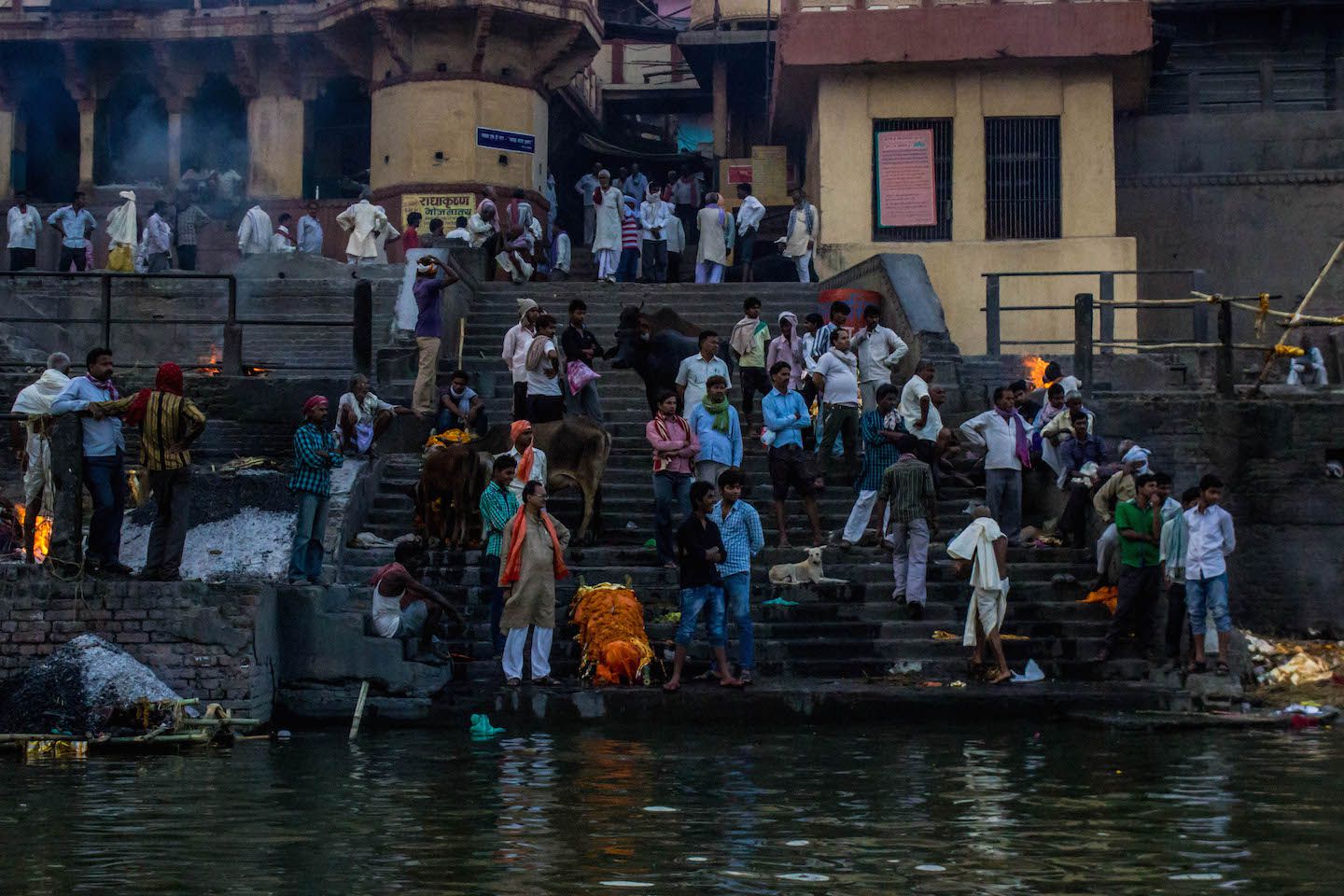
Although the whole cremation process sounded terrible and scary, it was less shocking than I thought it would be. If I put myself in their shoes, I wouldn’t be able to handle it nearly as calmly as they did. However, when we thought about it from their point of view, it wasn’t so bad. The process is considered very sacred and from their point of view, they are doing the best possible thing for their loved ones.
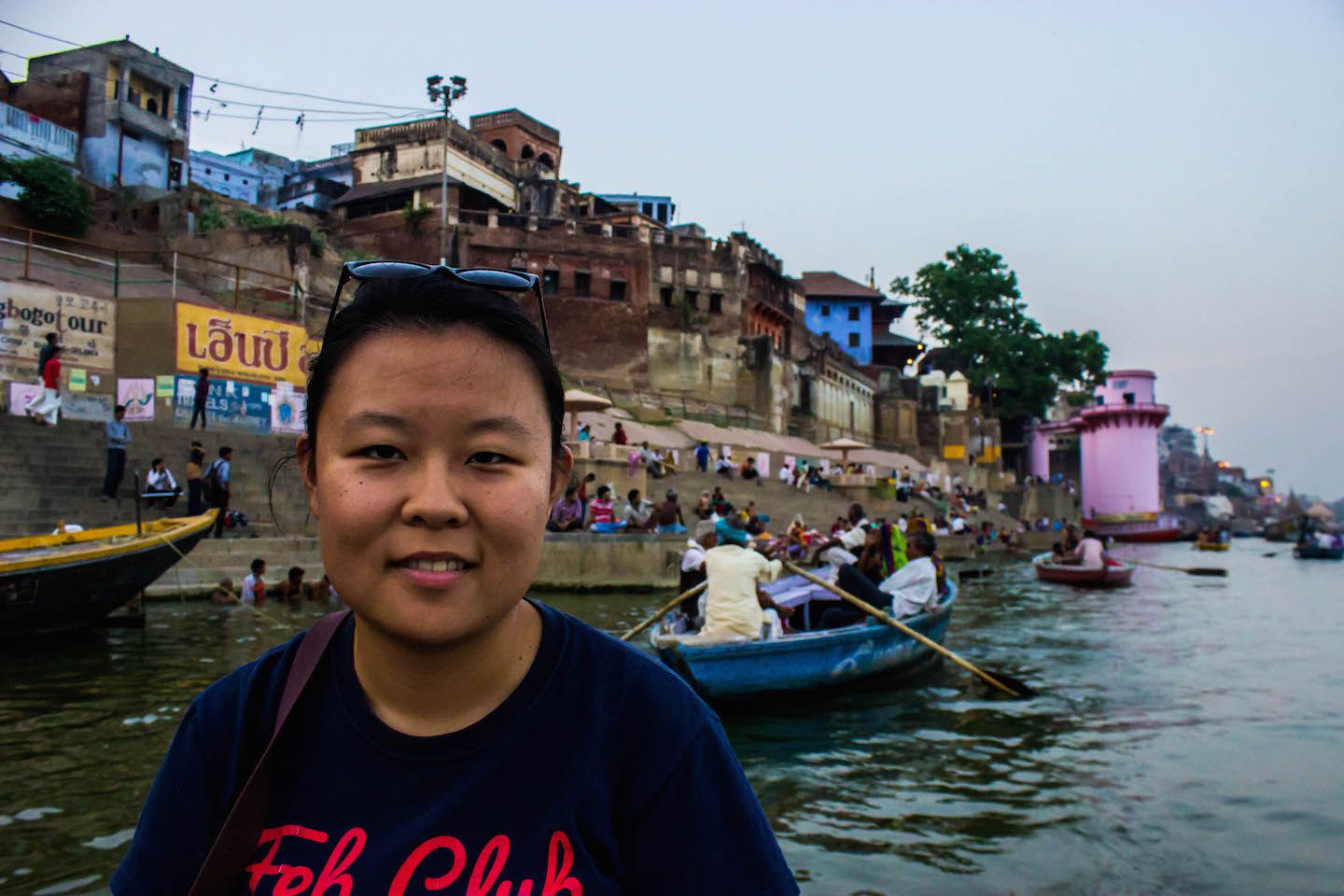
We found Varanasi to be extremely eye-opening. It was beyond just seeing people live in a different way, it was seeing people not just choose, but go out of their way to do things that we would find very uncomfortable. But at the same time, we had to keep in mind that for them, this was something incredibly sacred and special. While we could not and probably will never completely understand, what we could do was respect their culture and beliefs. Other people probably consider parts of our lives to be strange and uncomfortable. Do we expect them to understand? No. Would we like them to respect our choices? Absolutely. Varanasi was the best examples of one of the greatest gifts travel can give us: tolerance. If we could all be more tolerant and accepting of one another, the world would likely be a better place.
For more pictures from Varanasi, please visit the gallery!

